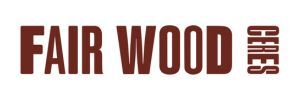News
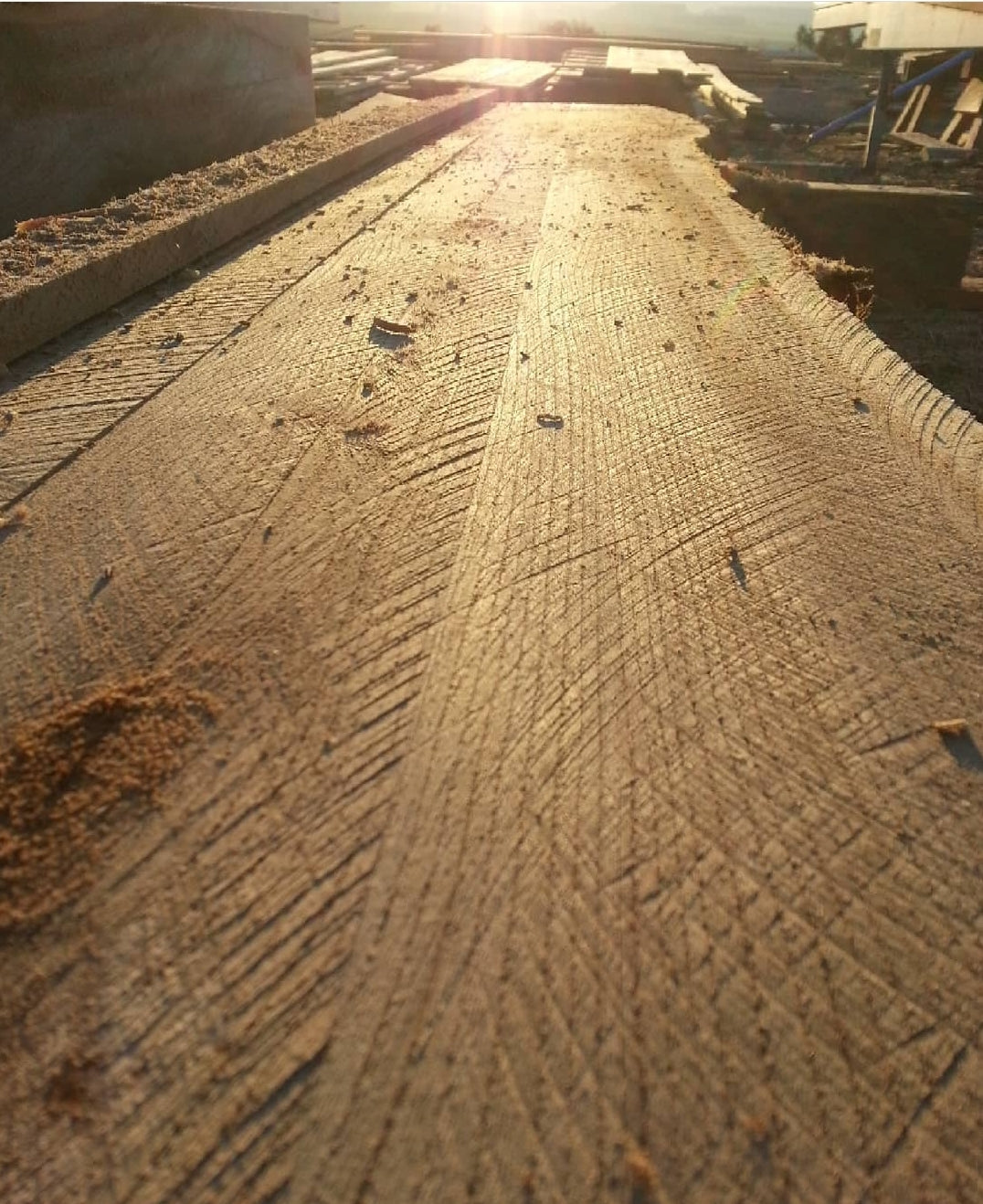
on Oct 04 2021
Words by Chris Ennis.
In February, not long after a storm hit outer-Melbourne, urban-sawmiller Paul McKay, emailed CERES Fair Wood’s manager Hayden Cronin, a list of timbers he was about to begin milling.
Paul’s list included a large manna gum that had fallen on a home at Three Bridges and two trees nearby that an arborist had assessed as dangerous.
Over at Cottles Bridge a yellow box had come down over a road and needed clearing.
And in Narre Warren there was a spotted gum overhanging a house and was going to be removed.
Paul also added two stands of canker-affected macrocarpa trees that were coming down in Berwick and Keilor.
Hayden scanned Paul’s list; after a couple of weeks drying in Fair Wood’s solar wood kiln the manna gum and yellow box would be good furniture-making timber.
The spotted gum he knew was perfect for flooring or decking while the macrocarpa would help feed the huge demand he’d been getting lately for cladding, screening and garden sleepers.
Each year around Melbourne hundreds of trees simply die, come down in storms, are felled for safety reasons or removed to make way for new roads and housing.
Usually when a large tree comes down in the city arborists cut the trunk into manageable blocks for firewood, though often downed trees end up in landfill.
When scientist, entrepreneur and master tinkerer, Paul McKay, learned about this huge amount of perfectly good timber going to waste he decided to do something about it in the most practical way he could.
Paul bought himself a portable Lucas Sawmill and began letting arborists know he could take the large labour-intensive logs off their hands for free.
The response was overwhelming; arborists loved him and landowners regularly took the valuable timber he milled from their fallen trees.
Over the last decade Paul’s milled hundreds of trees all over Melbourne and has been a major supplier of often hard-to-find timbers for Fair Wood’s customers.
It’s weird to think of the city as a forest but at almost 10,000 square kilometres, the Greater Melbourne area is home to millions of trees, a number which is set to grow in the future.
In 2019 Melbourne’s thirty-one councils, along with the State Government, Parks Victoria, various water and catchment management authorities committed to transform Melbourne into the world’s most extensive urban forest.
The City of Melbourne alone with 90,000 trees have planned to almost double their tree canopy from 22 to 40 percent by 2040.
And as our urban forest grows Paul McKay has been busy training young sawmillers to keep putting the trees that come down in the city to their best possible use.
Check out our timber availablity list to see what timbers we currently have in stock.
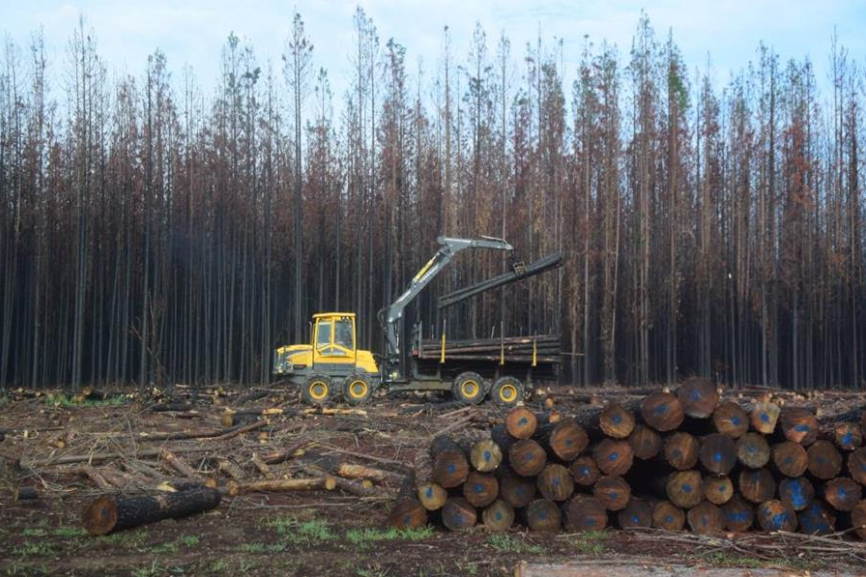
on Oct 04 2021
Part of the CERES Fair Food newlsetter series, words by Chris Ennis.
This summer over 40% of forests set aside for native logging operations have burned.
With the end of native logging in Victoria recently announced, the bushfires have just ramped up the fight for what’s left in our forests a whole lot of notches.
Up in the Victorian central highlands VicForests’ logging contractors, who were already struggling to fill woodchip and timber quotas before the bushfires, have continued clear-felling forests.
Desperate to protect the now much-reduced greater glider, smoky mouse, sooty and powerful owl habit, citizen science group WOTCH successfully sought a supreme court injunction to stop the logging.
Meanwhile, The Australian Forest Products Association (AFPA) are lobbying politicians to keep woodchippers and timber mills going by giving them the go ahead to begin salvage logging in State Forests and National Parks.
Countering the call Professor David Lindermeyer, a prominent landscape ecologist and conservation biologist, says studies show salvage logging pollutes waterways, kills surviving wildlife and potentially delays forest recovery by more than a hundred years.
The AFPA are also talking up “mechanical thinning” as a means of hazard reduction and as a source of woodchips and timber into the future. Pushing back, conservationists view thinning as a cover to continue and expand native logging.
Before Christmas we didn’t have enough forest. Now we have even less.
The scale of the fires boggles my mind; 10 million hectares of forest burned so far, one billion animals killed.
Sometimes I’m tempted to think that we’ve actually lost this and my thoughts turn to stockpiling lentils and enrolling our kids into crossbow classes.
But the other day I saw this email from Philippa Noble, a tree farmer among other things at Brimin Lodge Farm near Yarrawonga.
It was written to the President of the Institute of Foresters of Australia, it read…
…..In a drier climate with more dry lightning strikes igniting fires, timber plantations near mountainous native forest areas will become more and more risky.
If all farmers were encouraged to plant 10% of their farms to managed plantations of fire tolerant species, not only would it spread the resource, benefit farmers and make the industry more resilient, it would also assist with habitat creation and carbon mitigation.
We are being told that we need transformational change to deal with the changing climate – this is an opportunity for transformational change…..
It was so sensible, so practical and so doable; a shared, low-tech solution requiring a small but powerful change in the way we grow our food and fibre.
It was LandCare for our timber.
And who couldn’t get behind that?
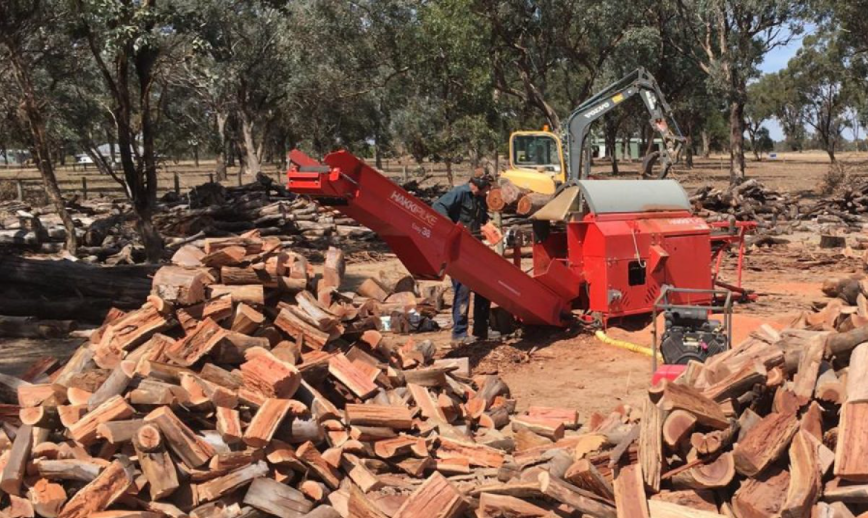
on Oct 04 2021
Part of the CERES Fair Food newlsetter series, words by Chris Ennis.
You may remember last year Goldfields agroforesters, Mal Brown and Ben Boxshall, came down to the Fair Wood warehouse in Preston to talk sustainable firewood.
Each year in Australia we collectively burn around seven million tonnes of firewood, much of it sourced in a not-so-transparent way from native forests as “fallen or dead wood”.
There’s nothing as lovely as a wood fire, but there’s also nothing as lovely as a native forest.
There’s an emerging movement of foresters who are thinking very differently about the timber plantations they manage.
Mal and Ben from wood4good are such foresters.
When I think of timber plantations I see acres of pine trees or blue gums clear-felled on maturity, debris burned and replanted again.
When Mal and Ben think of timber plantations they see perennial forestsregulating and protecting land, water, biodiversity and climate.
To Mal and Ben timber is just one of the by-products of a sensitively managed tree plantation.
Their goal for a tree plantation is to become a perpetual source of renewable materials, bio-energy and income.
wood4good are currently working in a 300 hectare red ironbark and sugar gum plantation owned by Greater Bendigo City Council.
Planted on degraded grazing land, the plantation is now twenty years old – the time for smaller trees to be selectively thinned giving larger trees room to mature into saw logs.
The thinned trees, thick as fence posts, are traditionally seen as waste and pushed into piles and burned.
Instead, wood4good sees this “waste product” as an opportunity to help pay for forest management as well as reducing pressure on native forests to supply firewood.
Last year while Fair Wood was trialling sales of bagged firewood we had lots of requests and emails about supplying bulk firewood.
Last week Fair Wood took delivery of a flat-bed truck and began dropping pallet cages full of Mal and Ben’s sugar gum firewood around Melbourne (that’s them in the pic below).
Sugar gum, like red gum, is incredibly dense and slow burning – the two qualities of a good firewood.
Read more about our Sustainable firewood here.
You can also find 15kg bags of sugar gum here on the Fair Food website – we deliver them with grocery orders.
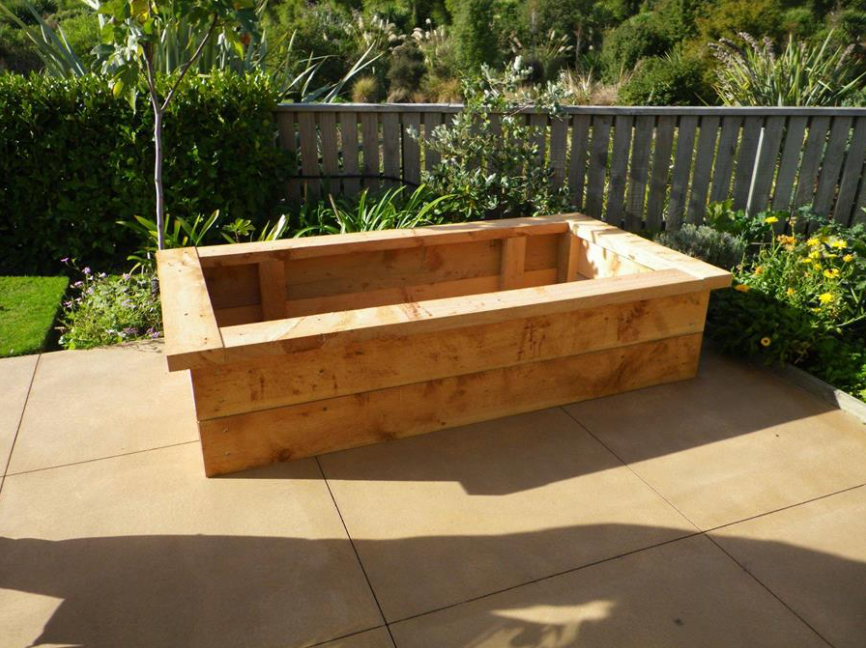
on Oct 04 2021
Down at CERES Propagation, farm manager, Meg and her team are beginning to bring their 20+ varieties of heirloom tomatoes out of the poly tunnels to harden off ready for planting.
As Meg’s rouge de marmande and yellow cherry pear seedlings reach skyward to the spring sun a corresponding urge to garden rises among the good people of Melbourne.
In gardens across the city weeds are pulled, compost piles turned and drills buzz as raised veggie beds made of the ubiquitous macrocarpa sleepers are screwed together.
If you’ve ever travelled through the rolling dairy country of South Gippsland you might have seen rows of pine-tree like macrocarpas running down fence lines filled with families of magpies.
Macrocarpa or Monterey Cypress originally came from California. Farmers wanting to protect calves and lambs from southerly gales found the fast growing tree with its thick dark green foliage made for a sturdy windbreak.
Macrocarpa can grow for well over 100 years but as they age they often fall victim to cypress canker – the old trees lose branches and their canopies open up letting through the cold winds .
The only cure is removal. These days more and more macrocarpa windbreaks are being replaced by native plantings.
Back in the day a tired macrocarpa would be bulldozed into a pile and burned, but with the advent of portable chainsaw mills a cottage industry has grown up salvaging macrocarpa logs.
Macrocarpa timber is reasonably durable, easy to work with, doesn’t require drying and has a lovely golden colour that silvers off nicely. It’s also good value and hence is very popular with builders and landscapers.
Its favourite use has to be building raised garden beds – it’s a healthy substitute for toxic treated pine and a sustainable choice over unsustainably harvested redgum.
We have recently teamed up with Very Edible Gardens (aka VEG) to supply a pre-drilled raised wicking bed kit based on VEG’s popular designs – all you need is a drill to put it together. They can also help build and also suplpy wicking bed conversion kits. They are offering a 5% to all CERES Fair Wood customers.
Read more about our Veggie Bed Kits here.
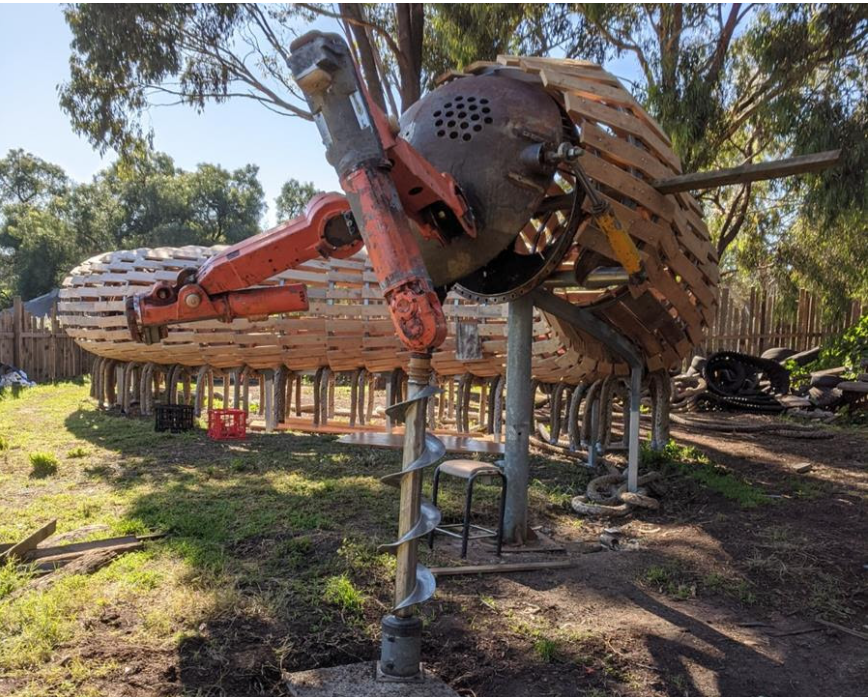
on Oct 04 2021
Part of the CERES Fair Food newlsetter series, words by Chris Ennis.
Lately CERES has felt a bit like a ghost town. But today people are emerging and are enjoying the autumn sunshine along with the chickens scratching for bugs.
In Honey Lane passing walkers stare up at the new tram-sized mechanical millipede that now dominates the hill.
Rearing up with steam punk robotic arms it feels like it could crash through the casuarinas and devour the old train carriage below.
I’ve come down with my eldest son to see how the new Terra Wonder playspace is going and also to have a sneaky play.
Spinning an auger attached to the millipede’s antenna my boy disappears up through yawning jaws, runs the length of the body and slides out the mighty beast’s recycled tyre anus with an, “Oooooooh, that feels disgusting!”
This awesome insect vision has been conjured into life by artist, Steve Mushin, creative director, Nick Curmi, and a team of CERES builders and welders.
Work-shopped with a group of local kids the space is a learning in itself.
Set amongst a 500x magnified soil-food-web, Terra Wonder is a world where almost everything has been salvaged or recycled.
Resident industrial sculptor, Nick Curmi loves scrounging. For months he’s been trawling scrap-yards around the state for old machinery to manifest Steve Mushin’s drawings.
The solid steel millipede head weighing a couple of tons was once a 150 year old steam-jacketed chocolate tempering pan from a Cadburys’ factory.
Its mechanical antennae are retired robot arms that built cars on an automotive production line.
The legs are made from massive ropes that were used to moor the Spirit of Tasmania.
Even the new macrocarpa body slats, sourced by CERES Fair Wood, are salvaged from old farm windbreaks destined for a bonfire.
During the week I get an email from Nick Curmi looking for a truck to pick up a huge excavator arm that will be used to create an arched entrance-way.
The arm is sitting in a scrap yard in Warrnambool that’s rumoured to be full of retired industrial machinery – a veritable scavenger’s El Dorado.
I imagine Curmi at his desk trembling like a prospector ridden with gold fever.
The mechanical millipede will be the first of Terra Wonder’s elements to be completed.
Still to come are giant fungal walkways, cocoon tree-houses, worm tunnels (made from enormous recycled steel pipes) and a rescued crane that nods to CERES’ quarry past.
Like so many of CERES’ projects before it Terra Wonder will be completed with a mixture of grants, passion and gifts from our community.
On our first weekend out of isolation it feels odd that we’re building a place designed to bring hundreds of children and parents together.
But Terra Wonder is an act of faith, a gift, for when we get through this and kids can come out and play together again.
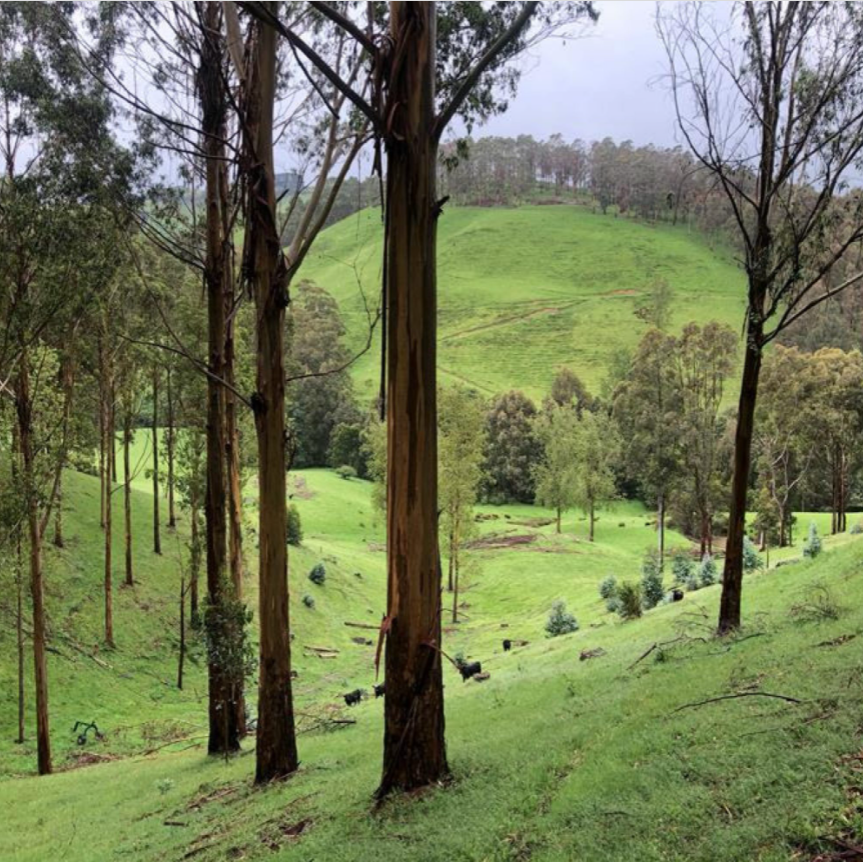
on Oct 04 2021
Part of the CERES Fair Food newlsetter series, words by Chris Ennis.
A couple of weeks ago the Andrew’s Government announced it was phasing out logging in native forests over the next 10 years.
The guts of the decision is;
1. Old growth logging will cease immediately.
2. Current regrowth logging will be extended until June 2024.
3. From July 2024 to June 2030 there will be reduced regrowth logging.
4. No native logging after June 2030.
The news was greeted with relief by environmentalists who have been fighting to save, among other things, the thousand or so remaining Leadbeater’s possums who live in the hollows of very old mountain ash trees.
Paul Haar, award-winning architect, long-time timber industry watcher and friend of Ceres Fair Wood emailed the other day with his own take on the decision….
….Great news for the Strathbogies but bad news for the old growth forests of NSW where Gladys Berejiklian has recently ‘remapped and rezoned’ public forests to expand old growth logging there.
Also bad news for the forests of Brazil, Bolivia and Peru where illegally logged hardwood laundered into the supply chain will flow into Australia at an ever more rapid rate.
If you check out all the durable external wood on building sites across Melbourne suburbs you’ll see old growth and regrowth Blackbutt, Spotted Gum, Tallowwood from coastal NSW as well as (in surging quantities) Cumaru from giant ancient trees of Amazonia.
So the question is what are our ethical timber alternatives?
Victoria has a growing number of farmers who have either planted trees suitable for timber or are tree-curious.
Establishing a farm forestry industry to replace native forestry is a huge undertaking but as the saying goes, the best time to plant a tree was 15 years ago, the second best time is today.
Trees planted on farmland are a win-win-win-win-win (yeah, so many wins).
– First farm forestry takes the pressure off standing native forests locking up carbon and protecting habitat
– Second, trees on farms hold water in the soil, prevent erosion and protect waterways
– Third, farm forestry sequesters carbon in the trees and in the soil
– Fourth, farm trees mitigate rising temperatures and reduce evaporation by creating shade and slowing down winds.
– Fifth, farm trees provide shelter for farm animals and habitat for native animals.
Farm trees are also an extra source of income for farmers but five is enough of a list.
Providing farmers with a market for their timber is Ceres Fair Wood’s reason for being.
The other part of our mission is helping people who are building, renovating or landscaping feel good about the timber they’ve sourced every time they walk into their house or sit out in their garden.
You can see what kind of timber we have available on our timber availabilty list.
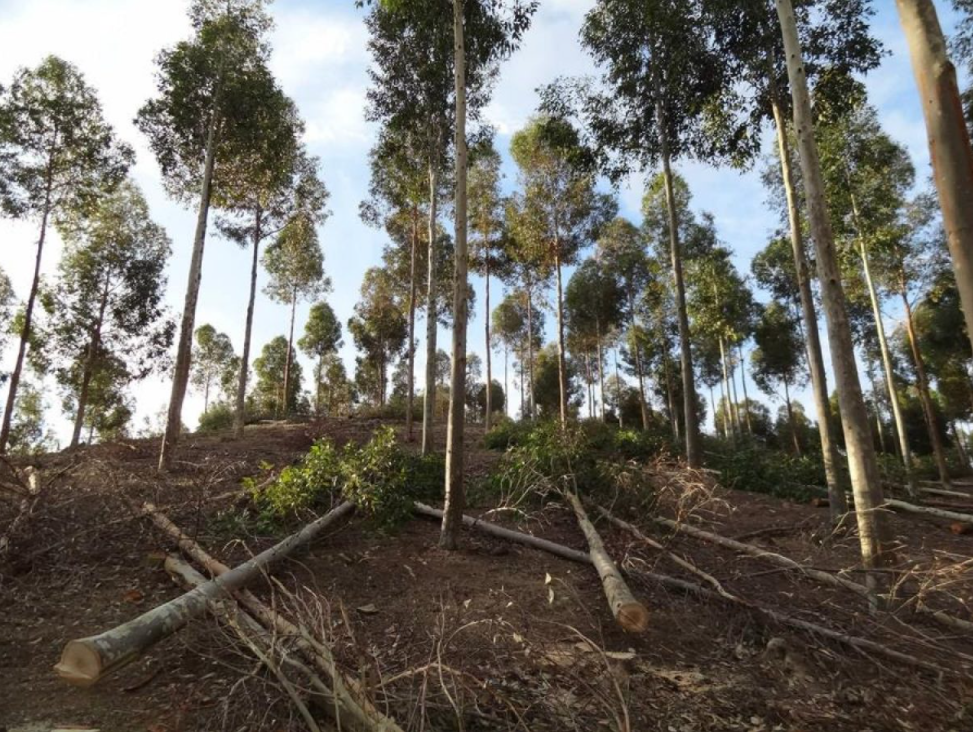
Agroforestry's Time - Fair Food blog
on Sep 30 2021
Words by Chris Ennis.
It’s hard to know why some things get fished out of in-boxes while others, equally worthy of our attention, are left to drift by and wash up in the eddies of the unread.
For some deeply unknowable reason this week I found the clickbait of the Victorian Government’s Report from The Independent Expert Panel on Interim Emissions Reduction Targets 2021-2030 somehow irresistible.
Did you know in 2017 Victorians reduced our overall emissions by a whopping 11% when Hazelwood power station closed? I didn’t.
And that the biggest single impact on emissions we will make as a State will be the phasing out our last three remaining brown coal-fired stations – Yallourn, Loy Yang A and B.
But it was what The Expert Panel said next that I found most interesting – Victoria’s next largest carbon reductions will be come through forest management on public land, plantations and on-farm planting.
I had no idea that Victoria’s highland mountain ash forests are not only the world’s tallest flowering plants but are also the most carbon dense of any forests worldwide – amazing!
The FAO speaks about, The double potential of agroforestry to address climate change issues.
That’s because standing forests remove around a quarter of the CO2 we add to the atmosphere, while growing trees on farms sequesters even more carbon in wood and soil.
Then there’s the human side – if your timber deck is made of sugar gum grown on a Victorian farm there’s no need to chop down merbau trees in Myanmar which are quite likely being stolen from local indigenous families by foreign logging companies.
And there’s the environmental side – agroforestry trees help hold water in the land through droughts, reduce evaporation, provide shade, wind protection and habitat for animals.
Agroforestry is a sleeping giant in combating climate change; which is why CERES is so keen to support local farmers growing timber trees through our timber social enterprise Fair Wood.
In the last year, Fair Wood has sold timber purchased from twenty-four Victorian farmers that has been used in cladding houses, flooring, decking and landscaping.
Like organic food thirty years ago, agroforestry timber occupies a tiny niche in the market, however, just as people woke up to the environmental and social benefits of organic farming, agroforestry’s time has come.
You can read more about Agroforestry in our resources blog.
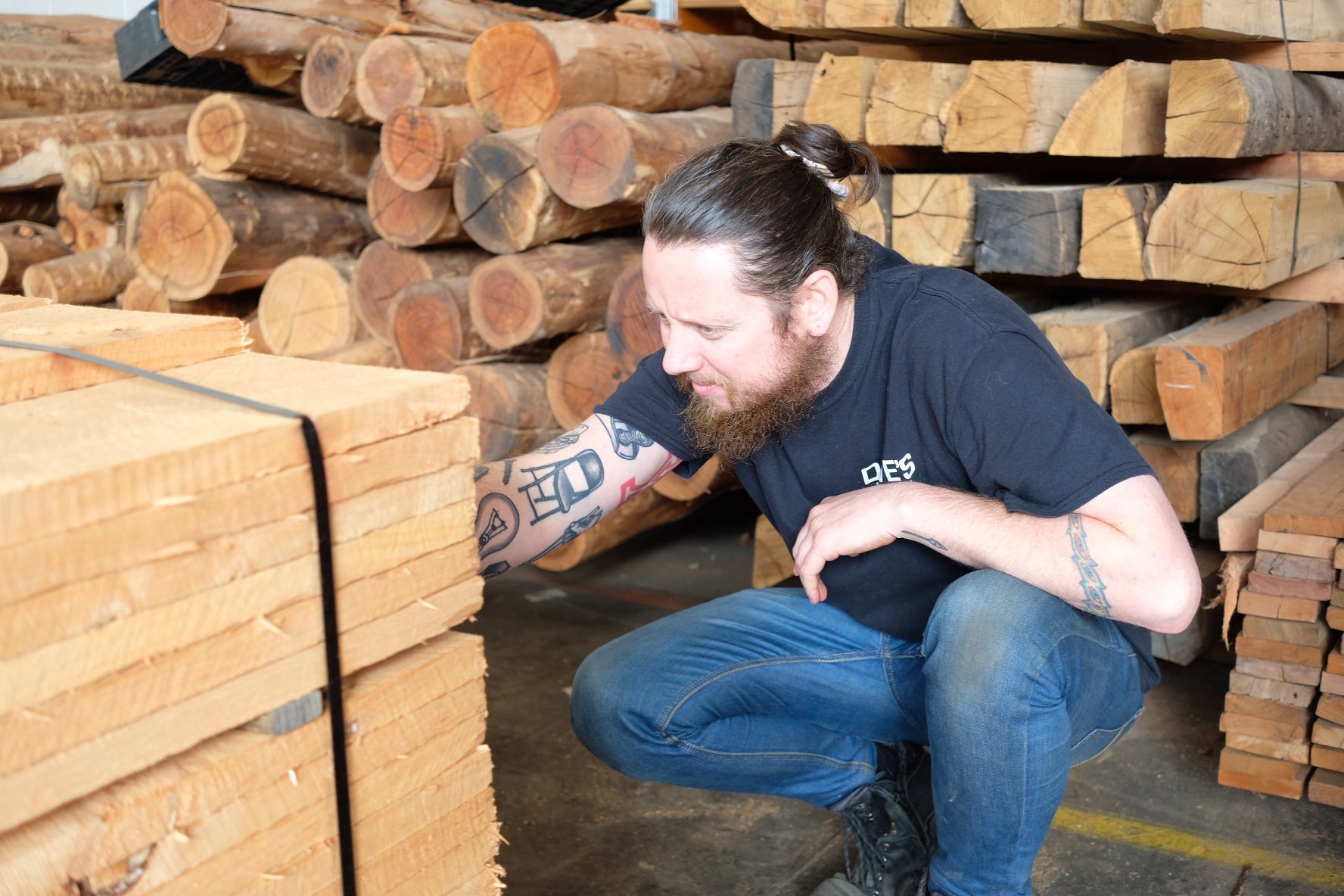
on Sep 30 2021
We are chuffed to be featured over on Zero Carbon Moreland.
"Timber is a key ingredient when renovating or undertaking DIY projects at home, but few of us know how to avoid buying unsustainable timber – especially timber logged from irreplaceable old growth tropical rainforests in SE Asia and the Amazon.
Enter CERES Fair Wood. Started by CERES in 2017, Fair Wood social enterprise’s mission is to teach us how to replace timbers like common decking Merbau or Cumaru, with locally-grown, affordable and faster-growing options.
“Fair Wood timber is different to what you get in a typical wood supply store,” says Fair Wood General Manager, Hayden Cronin.
“Everything we stock has been sourced locally – from trees that need to be cut down for safety reasons to well managed plantations. We source trees from homeowners, councils, arborists, farmers – people keen to make sure that trees that need to be cut down are used for something more valuable than woodchips.”
Fair Wood’s huge range of timbers can be used for everything from veggie boxes, decking, fencing and furniture making, to home construction. “We keep our prices competitive through short supply chains and know that by sourcing locally, we’re employing local people,” says Hayden.
“People love that every piece of timber in our warehouse has a story. We know where each tree was grown, why it came down and the name of the miller. This knowledge translates into people’s projects and makes them special.”
If you’re thinking about using timber for a project “drop into our Preston warehouse and say hi”!
You can read it here and see the other great Moreland company we keep.
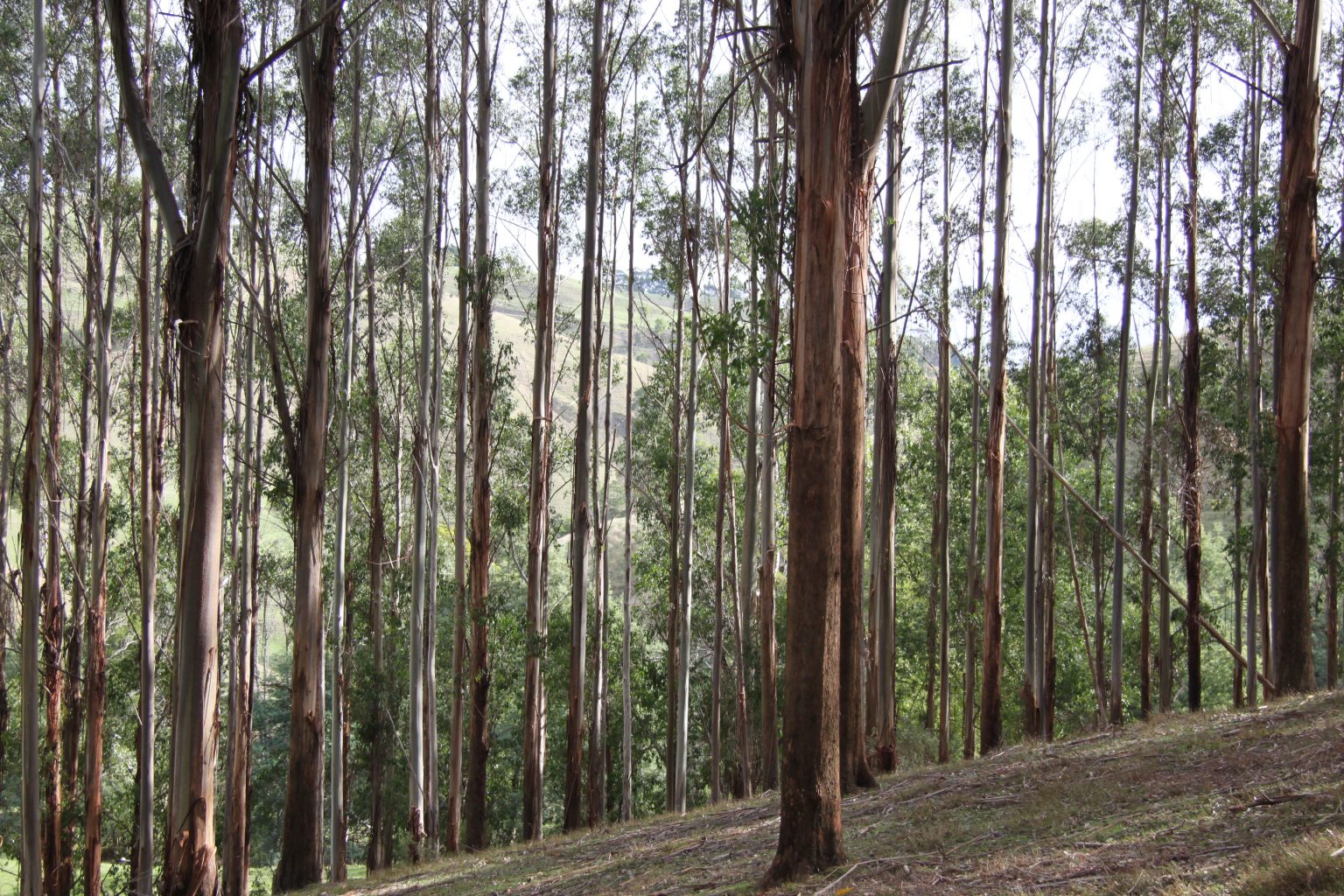
Thoughtful forestry and a great story
on Jun 29 2021
It’s small-scale farmers who have small lot timbers to move and that need a market. So much of this type of timber historically, and indeed still today, doesn’t have an outlet to be sold. There is where Fair Wood comes in and indeed is one of our major reasons for being, to create a market for this amazing timber that will otherwise, often, become a waste product.
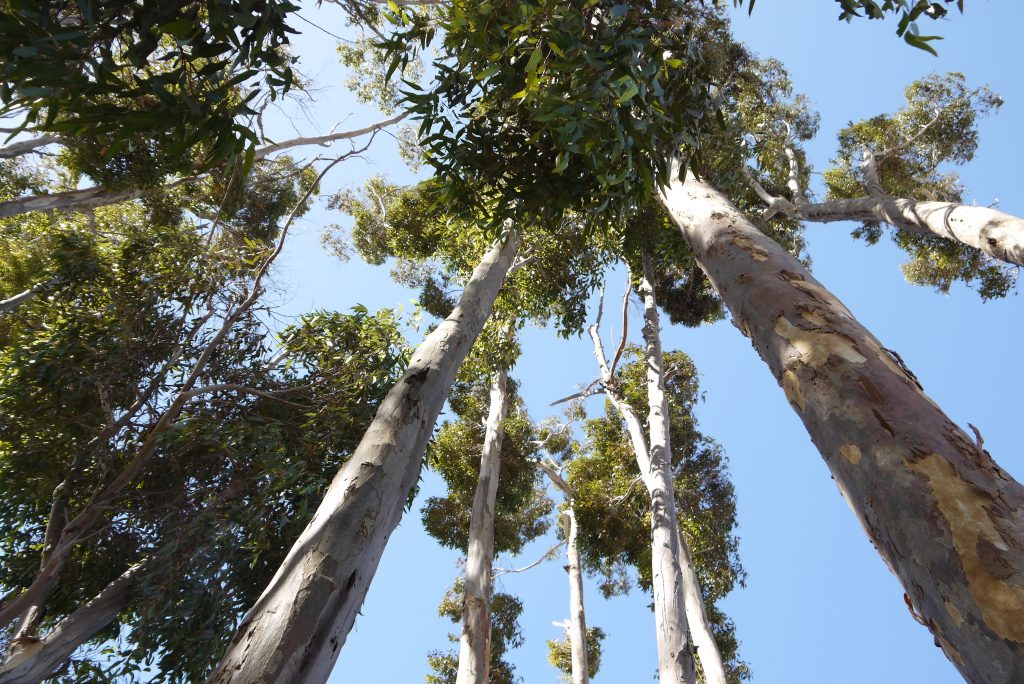
Why Sugar Gum Firewood is the Best Alternative
on Jun 22 2021
Why burning Sugar Gum for our firewood is better than some other more readily available alternatives out there
This time of year, and almost any place you go to buy your firewood, you will see (River) Red Gum. It is ridiculously easy to source and you would be forgiven for thinking it’s the only wood you should be burning. But, like most things, there is more to it than initially meets the eye.
The majority of the Red Gum we burn in Victoria is sourced from private and State forests that are in the environmentally significant Murray and Darling River floodplains of Victoria and New South Wales. And whilst it appears to be readily available and burns to generate a lot of heat, its harvesting comes at a heavy price to the ecological health of our old growth remnant native forests.
Collecting fallen or dead trees from native forests for our fires is an old tradition but these fallen or dead trees are homes for many endangered squirrel gliders, brush tailed tuans and carpet snakes.
So what’s the alternative?
As a general rule of thumb Red or Box gum almost always is coming out of remnant native forests, so that’s worth remembering when making your buying decision. Ask your supplier about where they source theirs from.
Fortunately, there are alternatives too. It’s best practice to look for Sugar or Blue Gum sources. This is what is currently being grown in sustainably managed forests.
For any other brix or composite products, sourcing cannot be guaranteed so should be avoided.
CERES Farm-grown firewood makes use of Sugar Gum plantation thinnings that would otherwise be burnt as waste. These forests are established in largely cleared landscapes such as Victoria’s Goldfields and the Riverina and has a range of benefits for both the natural environment and the health of our farming communities.
We are very fortunate to be working with the good folks over at Wood4Good. They want to see forestry become part of our collective solution by planting forests in a way that provide a perpetual source of renewable materials, bio-energy and income. They do this by planting new forests on degenerated farmland and then effectively manage and sensitively harvest over time so that biodiversity is protected.
Sugar Gum is also a much better long and hot burning source than other alternatives such as Red Gum. Sugar Gum has a Relative Available Heat Value of 95% where as (River) Red Gum is 81%. (Victorian Department of Primary Industries, Gavin Brook 2004).
When burnt properly, using firewood from sustainable sources to warm your home can be less polluting and more environmentally sustainable than other methods as well.
It’s good to know that your fire source this winter can have many positive impacts for our ecological and social communities.
Get in touch with us today to order your winter’s worth of firewood.
For further reading about sustainable firewood please visit: https://vnpa.org.au/conserving-nature/sustainable-firewood/
Read more about Wood4Good here.
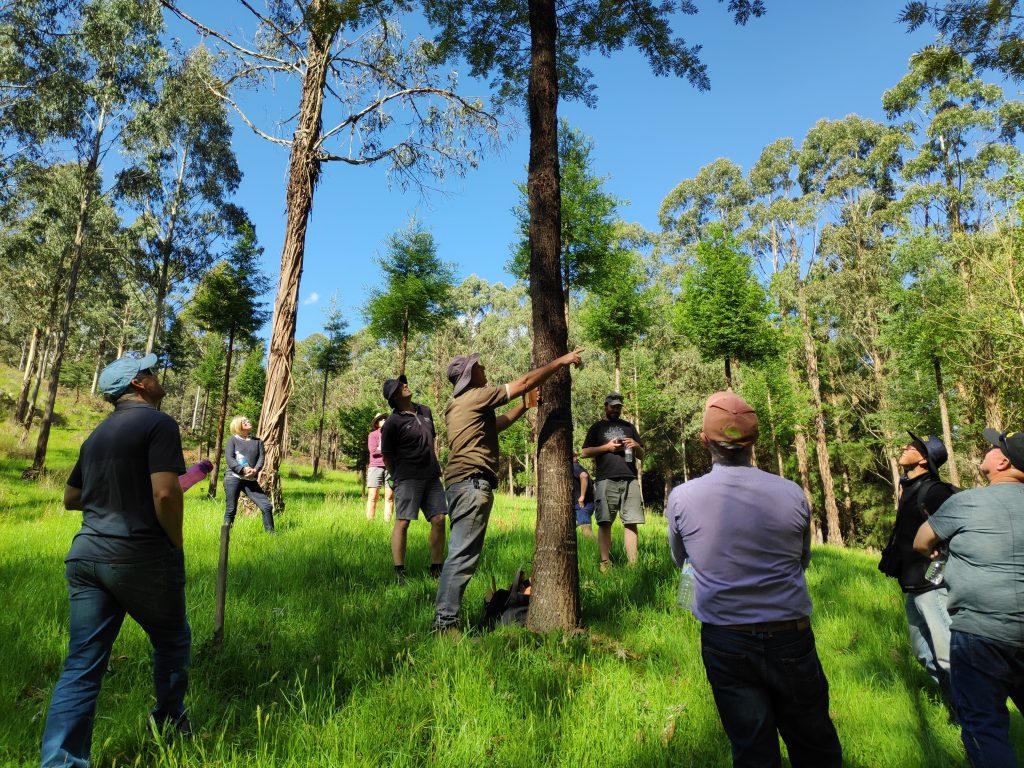
A Visit to Rowan Reid's Bambra Agroforestry Farm
on Jun 21 2021
Rowan Reid is serious aussie agroforestry academic, who created his amazing Bambra Agroforesty Farm, in the lush Otways. Rowan has written a book about Australian Agroforestry called 'Heartwood'. It is beautifully illustrated and totally inspiring.
